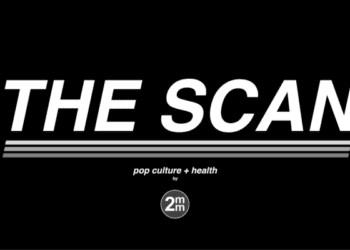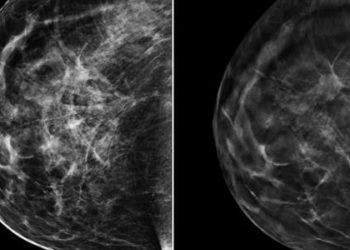2 Minute Medicine Rewind September 2, 2019
Preeclampsia is associated with increased morbidity and mortality for both mother and infant. In addition to maternal and fetal assessment, timely delivery after 37 weeks’ gestation is recommended to minimize maternal and perinatal morbidity. In women with late preterm preeclampsia, between 34 and 37 weeks’ gestation, however, there is a lack of consensus surrounding the optimal time for delivery, with some centers opting for expectant management until 37 weeks’ gestation, or earlier delivery if indicated in the setting of severe preeclampsia, for example. In this randomized controlled trial, 901 women with late preterm pre-eclampsia and a singleton or dichorionic diamniotic twin pregnancy were randomized to undergo a planned delivery or expectant management (usual care) to determine whether planned delivery reduces maternal adverse outcomes without substantial worsening or neonatal or infant outcomes. The co-primary maternal outcome was a composite of maternal morbidity or recorded systolic blood pressure of at least 160 mm Hg. The co-primary perinatal outcome was a composite of perinatal deaths or neonatal unit admission up to hospital discharge. Other than two women who had spontaneous onset of labour, all other women in the planned delivery group received the trial intervention. Of the women randomized to expectant management, 54% had a medically indicated delivery before 37 weeks’ gestation, with only two women giving birth before 37 weeks’ gestation without an additional medical indication. Researchers found that the incidence of the co-primary maternal outcome was significantly reduced in the planned delivery group (65%) as compared to the expectant management group (75%) (RR 0.86, 95% CI 0.79 to 0.94, p=0.0005). The incidence of the co-primary perinatal outcome, however, was significantly greater in the planned delivery group (RR 1.26, 95% CI 1.08 to 1.47, p=0.0034). This study therefore shows that planned delivery significantly reduces maternal morbidity compared to expectant management. This, however, must be weighed against an increased risk of adverse neonatal outcomes associated with prematurity.
Intensive glycemic control has been shown to reduce the risk of retinopathy and nephropathy in the setting of type 1 diabetes. While prior studies have established that an elevated hemoglobin A1C (HbA1C) is an independent risk factor for diabetic complications, few studies have followed patients from the time of diagnosis. In this population-based cohort study, 10,398 children and adults with type 1 diabetes identified through the Swedish National Diabetes Registry (1998-2017) were followed up from diagnosis to study the association between HbA1c level and microvascular complications in individuals with type 1 diabetes. The mean age at diagnosis was 14.7 years. Researchers found that the risk of any retinopathy (simplex or worse) for participants with a HbA1C <6.5% compared to HbA1C 6.5%-6.9% did not significantly differ (OR 0.77, 95% CI 0.56 to 1.05, p=0.10). The risk of retinopathy was, however, increased in participants with HbA1C levels of 7.0%-7.4% (OR 1.31, 95% CI 1.05 to 1.64, p=0.02) as well as those with HbA1C levels of 7.5%-8.6% (OR 2.05, 95% CI 1.68 to 2.51, p<0.001) and >8.6% (OR 3.72, 95% CI 3.02 to 4.58, p<0.001). Researchers also found that compared to patients with HbA1C 6.5%-6.9%, the risk of microalbuminuria or worse was increased in patients with HbA1C 7.0%-7.4% (OR 1.55, 95% CI 1.03 to 2.32, p=0.03) as well as those with HbA1C>8.6% (OR 2.64, 95% CI 1.81 to 3.86, p<0.001). Similarly, the risk of macroalbuminuria was also increased with HbA1C levels >8.6% (OR 3.43, 95% CI 1.14 to 10.26, p=0.03). This study therefore shows that the risk of retinopathy and nephropathy is increased in patients with increased HbA1c levels, above 6.5%-6.9%.
While a gluten-free diet is indicated in patients with clinical gluten sensitivity (GS), including celiac disease, there continues to be growing interest in adopting a gluten-free diet (GFD) amongst the general population. This has been largely perpetuated by a belief that a GFD is generally healthier. In this double-blind randomized controlled trial, 28 patients with no previously diagnosed gluten-related disorders were educated and commenced on a GFD. Participants were subsequently randomized to add a flour sachet containing either an organic gluten or a gluten-free blend to their diet, twice daily, to determine whether a GFD was associated with a decreased incidence of gastrointestinal symptoms. Subjects completed Gastrointestinal Symptom Rating Scales to measure baseline abdominal pain, reflux, indigestion, diarrhea, and constipation. Researchers found no significant differences in change of any symptom between the two study arms. This study therefore shows that the consumption of gluten-containing flour does not generate symptoms in healthy individuals without gluten-related disorders.
Stab wounds are managed operatively and, in select cases, non-operatively, depending on a patient’s hemodynamic stability, the anatomic location of the stabbing, and whether the patient demonstrates peritoneal signs. While some studies have demonstrated that patients with injuries associated with high mortality are more likely to achieve better survival and functional outcomes at level I centers, a more recent analysis found no difference in mortality for patients with penetrating trauma presenting to a level I versus level II center. In this retrospective cohort study, 17,245 adult patients admitted to an American College of Surgeons-verified level I or II center after a torso stab wound (2010-2016) were followed up to compare time to surgical intervention and mortality rates. Of the patients included in the study, 73.2% were treated at level I centers. Patients treated at either level I or level II centers had comparable injury severity scores. Researchers found that level I centers had a higher rate of laparotomy (25.5% vs. 21.4%, p<0.001) and shorter time to laparotomy (p=0.01). There was no difference in time to thoracotomy (p=0.86). Rates of mortality after thoracotomy, however, were decreased in patients treated at level I centers (p=0.04). Overall, patients treated at level I centers had a decreased risk of mortality when compared to patients at level II centers (OR 0.67, 95% CI 0.54 to 0.85, p<0.001). This study therefore shows that patients with torso stab wounds treated at level I centers have a lower risk of mortality and decreased time to laparotomy.
Nipple-sparing mastectomy (NSM) in the setting of breast cancer preserves the nipple-areola complex (NAC) and breast skin envelope. While previous studies have shown that NSM is an acceptable surgical option in select patients with breast cancer, there is limited long-term outcomes data for this approach. In this retrospective cohort study, outcomes for 962 breasts from 944 patients that underwent NSM at a single institution were followed up (median follow-up time 85 months) to assess the incidence, risk factors and long-term outcomes associated with cancer recurrence at the NAC. Researchers found that 4.1% of patients experienced disease recurrence at the NAC as the first event after NSM. The 5-year cumulative incidence of cancer recurrence at the NAC was 3.5%. Based on multivariate analyses, a number of risk factors were identified as independent risk factors for cancer recurrence at the NAC following NSM, including mutlifocality or multicentricity (HR 3.309, 95% CI 1.501 to 7.294, p=0.003), negative hormone receptor or ERBB2 subtype (HR 3.051, 95% CI 1.194 to 7.796, p=0.02), high histologic grade (HR 2.641, 95% CI 1.132 to 6.160, p=0.03) and extensive Intraductal component (HR 3.338, 95% CI 1.262 to 8.824, p=0.02). Metastasis-free survival and overall survival did not significantly differ between patients that did and did not develop cancer recurrence. This study therefore shows that the incidence of cancer recurrence at the NAC after NSM and immediate breast reconstruction is low. Risk factors for recurrence at the NAC following NSM, however, should be taken into consideration in providing individualized cancer care.
Image: PD
©2019 2 Minute Medicine, Inc. All rights reserved. No works may be reproduced without expressed written consent from 2 Minute Medicine, Inc. Inquire about licensing here. No article should be construed as medical advice and is not intended as such by the authors or by 2 Minute Medicine, Inc.







